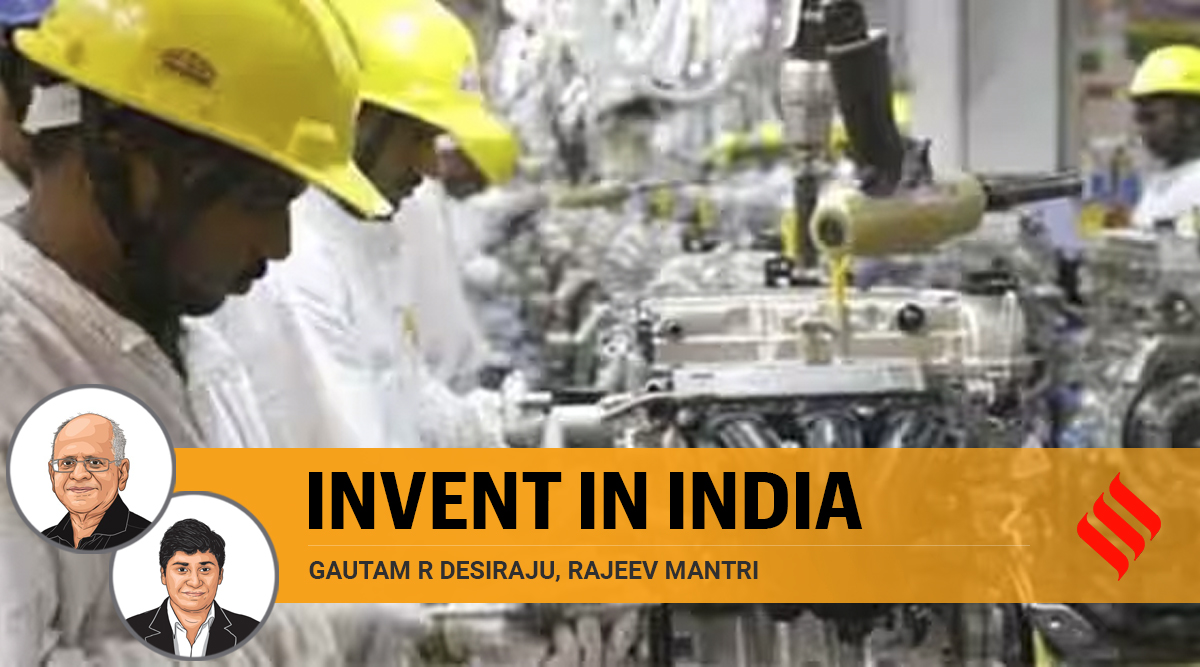September 20, 2023
Advancing India’s Innovation Ecosystem: Make in India

Advancing India’s Innovation Ecosystem: From Make in India to Invent in India
Introduction
- India, currently the world’s fifth-largest economy, aspires to ascend to the third spot in the near future. However, it lags in critical domains like innovation, science, and technology.
- The deficiency primarily stems from academia and industry not contributing adequately to the national R&D endeavor. Key sectors in manufacturing face challenges in factors like land, labor, and capital markets, alongside flawed trade policies.
- Efforts to rectify these issues are underway, evident in the Make in India initiative’s escalating momentum and the government’s drive to revamp the patent infrastructure. Simultaneously, the imperative of Invent in India is recognized, and strategic agreements, especially with the United States, highlight this synergy.
Revitalizing India’s Innovation Landscape: The Role of NRF:
- The establishment of the National Research Foundation (NRF) holds promise in bolstering the momentum of Invent in India.
- This institution is poised to usher in substantial reforms in channeling capital and resources towards transforming scientific knowledge into wealth through technology.
- These reforms are crucial in propelling India towards an economic output surpassing $10 trillion, aligning with the nation’s broader economic aspirations.
Parameters for Overhaul:
To ensure the efficacy of this overhaul, several pivotal parameters must be considered:
I. Prioritizing Merit and Quality of Human Capital:
- Elevating the stature of human capital in staffing and administration is paramount. In scientific research, the principle of Lotka’s law underscores that losing top leaders in a field hampers progress significantly.
- India must transition from a remittance-focused approach to one centered on value creation. Bridging the gap between teaching and research is essential, with a focus on merit-driven admissions.
II. Barbell Strategy for Research Funding:
- A dual-pronged approach to funding research is advocated. High-impact projects should receive support from a coalition of government bodies and industry players.
- Models like the NMITLI and DLI programs exemplify collaborative efforts between academia, industry, and national labs, setting a benchmark for R&D orientation towards industry.
III. Cultural Rejuvenation of Indian Science:
- Beyond institutional changes, the cultural fabric of Indian science necessitates revitalization. Overcoming hierarchical mindsets, dismantling cartels, and encouraging calculated risk-taking are imperative.
- Quality and motivation within the scientific community are pivotal. A critical evaluation of peer review processes and a shakeup in established norms are warranted for sustained progress.
IV. Global Collaboration and Talent Retention:
- Collaborative ventures with international counterparts can facilitate knowledge exchange and access to cutting-edge technologies.
- India should create an environment that not only retains its premier talent but also attracts top researchers from around the world, fostering a vibrant global scientific community.
V. Promoting Interdisciplinary Research:
- Encouraging cross-disciplinary collaboration can lead to breakthroughs at the intersection of various fields, driving innovation and addressing complex challenges.
- Specialized research centers should be established to facilitate seamless knowledge sharing and collaborative projects.
Upcoming Challenges:
Achieving this ambitious mark is not without its hurdles. The following challenges must be addressed:
I. Regulatory Agility:
Adapting regulatory frameworks to accommodate rapidly evolving technologies and emerging research areas is imperative.
II. Infrastructure Augmentation:
- Enhancing research infrastructure across the country to meet global standards is a critical step in fostering innovation.
III. Commercialization and Industry Integration:
- Bridging the gap between academia and industry requires concerted efforts to streamline technology transfer and promote entrepreneurship.
IV. Addressing Socio-Economic Disparities:
- Ensuring equitable access to resources and opportunities in the field of science and technology is essential for inclusive growth.
Conclusion
- The transformation from Make in India to Invent in India is pivotal in catapulting India to economic preeminence. The NRF, coupled with strategic reforms based on meritocracy, innovative funding models, a cultural shift in scientific paradigms, global collaboration, and interdisciplinary research, can herald a new era of scientific and technological advancement.
- These concerted efforts not only propel economic growth but also safeguard national security. India stands on the cusp of a transformative journey towards becoming a global innovation powerhouse, though challenges lie ahead that demand strategic and collaborative solutions.
Daily Gist : The Hindu/Indian Express : 30 Jan 2025
January 30, 2025
Gist of editorial : the Hindu/ Indian Express/20 Jan 2025
January 20, 2025
Daily the Hindu/ Indian Express Editorial Gist: 14 Jan 2025
January 14, 2025
